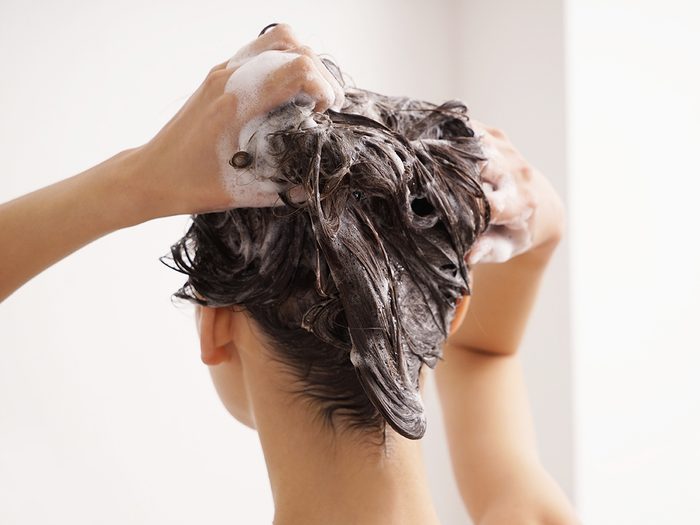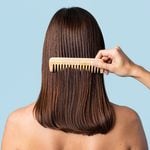Should You Be Using Clarifying Shampoo?

It can leave hair cleaner, shinier and bouncier—but is it right for your hair type? An expert weighs in.
You’ve probably heard of clarifying shampoo. Maybe you’ve walked past it on store shelves for years, or maybe you’re suddenly seeing it all over TikTok. So what is it exactly?
“A clarifying shampoo is a very deep-cleansing shampoo,” says Jason Lee, a Toronto-based hairstylist and founder of hair care line Mela and Kera. Over time, gunk—think residue from hair products, chlorine from pools and minerals from the water in your shower—can build up on your strands. “Clarifying shampoos help pull residue out of your hair,” says Lee. The result? Hair that is cleaner, softer, shinier and even has more body.
In other words, washing your hair with a clarifying shampoo is like hitting the reset button on your mane, says Lee. Once the gunk is gone, it’ll be closer to its natural texture and appearance.
We spoke to Lee to find out more about clarifying shampoo and who should consider using it.
(Related: Do Shampoo Bars Work?)
How do you know if you need clarifying shampoo?
There are a few tell-tale signs that your hair is in need of it.
“You’ll notice that your hair is a little bit sticky,” says Lee. “Or you might notice that your ends are really slippery when they’re wet, but hard to comb out.” The stickiness is from stubborn hair products staying in your hair, even after shampooing.
“You might also notice that your hair colour is a little different,” he says. “For example, you’re blonde and your colour is now darker or almost dirty-looking.” A clarifying shampoo can help it feel soft and smooth again and may even get its brightness back. But, Lee says, if you notice the tone of your blonde is more yellow or brassy, you’ll need a purple shampoo to restore its colour.
Should clarifying shampoo replace your everyday shampoo?
Clarifying shampoo is more of a treatment than an everyday product, so Lee says you should use it just once or twice a week. “Use it until you feel you’re happy with the results, and then immediately cut back to your regular shampoo,” he says. Then, you can use it just once a month or so to prevent build-up in the first place.
Can you overuse it?
While clarifying shampoo has many benefits, it can strip your hair of its natural oils and make it dry, and it can strip dyed hair of its colour or change its hue.
Lee recommends only using clarifying shampoo if you notice those signs of build-up (to review: stickiness, slipperiness, darker blonde hue, if you’re fair-haired), and as a monthly treatment to help prevent it.
How do you use it?
It’s used just like a normal shampoo. Wet your hair, apply the product, lather it up, scrub it in and rinse it out. And don’t forget to use conditioner (whichever one you’re currently using) afterward, to keep hair moisturized.
Is there anyone who shouldn’t use it?
Lee says people with dry or fine hair and those with naturally coily hair shouldn’t use clarifying shampoo often, as those hair types tend to be drier and more fragile. “I would use it once a week at most and stop as soon as you reach your desired results.” Have medium to thick hair? You can use clarifying shampoo until you don’t have that sticky feeling anymore, he says.
But people with dandruff, seborrheic dermatitis, psoriasis or eczema should be more careful. Clarifying shampoo can exacerbate those conditions, since it can dry out your scalp, so Lee recommends seeing a doctor for recommendations on detoxing shampoos instead.




